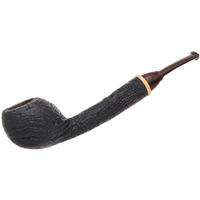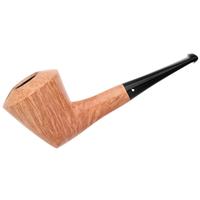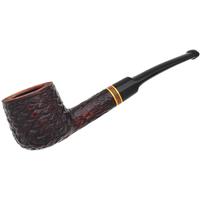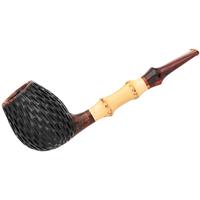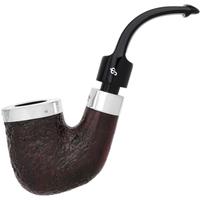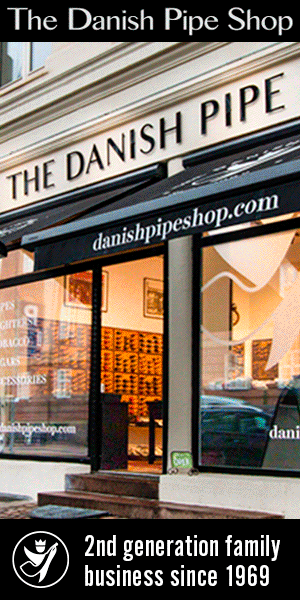I consider my threads juniormoric at minimum.I'm not mad. I'm bored with all the ill informed and sophomoric threads on this board. How's that...?
RIP Perique ?
- Thread starter BROBS
- Start date
You are using an out of date browser. It may not display this or other websites correctly.
You should upgrade or use an alternative browser.
You should upgrade or use an alternative browser.
Now, be fair.. We have our fair share of senioric threads.
Jeremy, nice write up. I think if every pipe smoker were to visit a factory to see all that is done from seedling to finished tin they would never bitch at a price being to high.Hey, fellas! I go to St. James Parish to hand select barrels of Perique 2 to 3 times a year. I know many of the farmers in St. James, and have visited their farms and seen their crops and been in their homes. I have seen the process, through many various stages. I’ve stripped leaf at Poche with Mark Ryan and the rest of the workers. I’ve helped roll bunches, called “cah-rahts”, to be packed into barrels. I’ve helped with turning barrels, a particularly laborious process which is done multiple times throughout the year that the tobacco spends in the barrel. Making Perique is hard work. Most people wouldn’t do it. It is hardly surprising that manufacturers don’t make their own Perique when one sees the process and the constant attention and troubleshooting involved to keep from having quality issues.
Perique is not made anywhere outside of St. James. There’s a product from Brazil called Arapiraca, which is sometimes compared to Perique but it is not that similar. Someone here said Perique is a marketing term. Perhaps, in the same way that Chocolate, or Wool or Steel are marketing terms. These are terms to communicate what materials are used in a product, what the end user can expect the product to be like. Perique is a specific tobacco type and quality that is produced through a specific, unique and labor intensive process and the results of this process are totally unlike anything else in tobacco, that I’ve ever seen.
A few other points worth noting:
Mark has one small barn where he processes Dark Fired Kentucky in barrels, under extreme pressure, like Perique. The results are totally unique and the sole customer for this product is a very well known cigar manufacturer. There is none of this Dark Fired that is used in Perique and it is not called Perique. It is called Cajun Black. Years ago, McClelland used some in a handful of blends.
The crop grown in St. James Parish is not enough to fill demand and this has been the case for decades. Not just the last few years. Mark Ryan found that back into the 20’s and 30’s the accounting books at Poche Farms show that they were supplementing St. James leaf shortages using Dark Air Cured from TN, KY or Canada, depending on the availability and quality available. The vast majority of pure St. James Perique is being used in American Spirit Perique cigarettes, due to exclusive contract with one processor. It’s been that way for a long time. Years. What is available for use in pipe tobacco currently, is often, though not always, comprised of a blend of St. James leaf and leaf from TN, KY, of Canada. The imported leaf used is very similar to the St. James leaf, which is basically a Dark Air Cured type. Not Dark Fired, Dark Air Cured.
The blending is done at the end of the Perique process, once the two products are nearly indistinguishable. Again, I’ve personally seen all of this. St. James is wet, hand stripped, rolled, packed and pressed into bourbon barrels separately from imported leaf which goes through the same process. Once they are in very nearly the same range of aroma, flavor and color, they are blended together into a barrel, pressed down under many tons of pressure and then capped for about 3 months. None of this blending practice is new or recent.
Lastly, Latakia is produced by hanging small, oily tobacco leaves over a smoldering fire that must be maintained for 5 to 6 months. This is an incredibly wild process. Dark Fired is usually done in 14- 16 days and that is a very stressful and sleep deprived time for the farmers and their families. 5-6 months is just wild.
These kinds of extremely labor intensive tobacco processes are the reason that both Latakia and Perique are in short supply. If anyone could do it, that supply problem wouldn’t exist.
Back in 2000, I spent 3 days with Carlos Fuente Jr and he showed me everything that goes into making hand made cigars. At the time he had 2500 people working for him. Chateau de Fuente which is the farm that grows all the wrapper leaf for Opus X is just a beautiful place. We sat on a large veranda smoking Opus X Torpedo's that had been aging for years and drank strong Dominican coffee and it was really cool.
He showed us one warehouse that was really cold and was filled with nothing but 1984 Cameroon wrapper tobacco. It had to be in the thousands of bails because Carlito couldn't even remember. He took us to the sorting rooms, rolling rooms, box factory from seed tp cigar it made it very easy to see that if these factories were not in third world countries a basic Fuente 858 would be a 20 dollar cigar, instead of about 5 bucks a stick. The quality control was insane as I had been in 2 Cuban cigar factories and it was night and day. The Cuban's didn't give a shit about quality control and it looked like they purposely rolled plugged cigars while they giggled. They didn't know that we knew how cigars were supposed to be rolled entubar and I saw boxes of Cohiba Especiales put in boxes and never looked at again. This was the Cohiba factory not open to be seen by the public. They put on a good face there and was quite amazing at the difference.
If people got to see any cigar factory you would think a high end cigar would cost you 30 bucks at least. This is why only wrapper leaf is grown only in Connecticut, and never whole cigars. After you see this kind of thing, your mind is blown and then you will feel lucky as can be to pay what we do for our cigars. I can imagine that pipe tobacco is very similar and very little of it is grown inside the USA. I forgot to mention the aging rooms, talk about incredible. Tons of Don Carlos, Hemingways, Ashton VSG's and on and on. Total mind blower.
Thank you for your time to give us an inside peek at what is actually happening in the work of pipe tobacco!!Hey, fellas! I go to St. James Parish to hand select barrels of Perique 2 to 3 times a year. I know many of the farmers in St. James, and have visited their farms and seen their crops and been in their homes. I have seen the process, through many various stages. I’ve stripped leaf at Poche with Mark Ryan and the rest of the workers. I’ve helped roll bunches, called “cah-rahts”, to be packed into barrels. I’ve helped with turning barrels, a particularly laborious process which is done multiple times throughout the year that the tobacco spends in the barrel. Making Perique is hard work. Most people wouldn’t do it. It is hardly surprising that manufacturers don’t make their own Perique when one sees the process and the constant attention and troubleshooting involved to keep from having quality issues.
Perique is not made anywhere outside of St. James. There’s a product from Brazil called Arapiraca, which is sometimes compared to Perique but it is not that similar. Someone here said Perique is a marketing term. Perhaps, in the same way that Chocolate, or Wool or Steel are marketing terms. These are terms to communicate what materials are used in a product, what the end user can expect the product to be like. Perique is a specific tobacco type and quality that is produced through a specific, unique and labor intensive process and the results of this process are totally unlike anything else in tobacco, that I’ve ever seen.
A few other points worth noting:
Mark has one small barn where he processes Dark Fired Kentucky in barrels, under extreme pressure, like Perique. The results are totally unique and the sole customer for this product is a very well known cigar manufacturer. There is none of this Dark Fired that is used in Perique and it is not called Perique. It is called Cajun Black. Years ago, McClelland used some in a handful of blends.
The crop grown in St. James Parish is not enough to fill demand and this has been the case for decades. Not just the last few years. Mark Ryan found that back into the 20’s and 30’s the accounting books at Poche Farms show that they were supplementing St. James leaf shortages using Dark Air Cured from TN, KY or Canada, depending on the availability and quality available. The vast majority of pure St. James Perique is being used in American Spirit Perique cigarettes, due to exclusive contract with one processor. It’s been that way for a long time. Years. What is available for use in pipe tobacco currently, is often, though not always, comprised of a blend of St. James leaf and leaf from TN, KY, of Canada. The imported leaf used is very similar to the St. James leaf, which is basically a Dark Air Cured type. Not Dark Fired, Dark Air Cured.
The blending is done at the end of the Perique process, once the two products are nearly indistinguishable. Again, I’ve personally seen all of this. St. James is wet, hand stripped, rolled, packed and pressed into bourbon barrels separately from imported leaf which goes through the same process. Once they are in very nearly the same range of aroma, flavor and color, they are blended together into a barrel, pressed down under many tons of pressure and then capped for about 3 months. None of this blending practice is new or recent.
Lastly, Latakia is produced by hanging small, oily tobacco leaves over a smoldering fire that must be maintained for 5 to 6 months. This is an incredibly wild process. Dark Fired is usually done in 14- 16 days and that is a very stressful and sleep deprived time for the farmers and their families. 5-6 months is just wild.
These kinds of extremely labor intensive tobacco processes are the reason that both Latakia and Perique are in short supply. If anyone could do it, that supply problem wouldn’t exist.
A mere Junior Member and we’re supposed to believe HIM?Hey, fellas! I go to St. James Parish to hand select barrels of Perique 2 to 3 times a year. I know many of the farmers in St. James, and have visited their farms and seen their crops and been in their homes....
Thanks for the insights Jeremy. I had heard rumblings of short-cuts being taken and dilution by some producers. Good to hear you’re hand-picking barrels and that quality, traditionally-made Perique is still being made, although in short supply.
Most flue-cured bright tobacco is grown in North Carolina and Virginia.I can imagine that pipe tobacco is very similar and very little of it is grown inside the USA.
Lots of burley, dark and fire cured KY, and flue cured Va is grown in Tennessee, Kentucky, and Georgia.
All perique is grown in Louisiana.
Africa is the primary source for sun or air cured brown/dark Virginias, fire cured dark KY flavored with African aromatic woods, and strong, cheap dark KY.
India grows lots of cigar-ish dark Va, both air and sun cured, as well as a large amount of sun cured Izmir and Smyrna.
The Balkan region now grows far more flue cured (and some very good sun cured) Virginia than orientals, specifically for Russian and Georgian cigarettes.
Lots of bright Va and burley comes from Brazil.
Mexico turns out a good bit of burley.
Most of these countries using up the majority of their tobacco for domestic cigarette production.
I can't say for certain, maybe Jeremy can chime in, but I believe most pipe tobacco is actually currently sourced from American growers. American aromatics are made of mostly Green River Burley and flue cured old belt Va, and that's still the biggest selling segment of pipe tobacco. Old English brands get lots of their condimental leaf from Africa and India, but still use plenty of US leaf. I'm not sure about the Danish and German manufacturers, but I'd wager they use more American flue cured, American light burley, African dark/dark fired and Indian grown orientals than anything else.
I'd go a bit further; for British tobacco the African/Indian "empire leaf" component isn't just condimental. In many ways it's completely central to the Gawith style and one of the main reasons American blenders can't achieve the same flavors. If G&H was restricted to only American and Canadian leaf their blends would probably start tasting a lot more like Sutliff or C&D.I can't say for certain, maybe Jeremy can chime in, but I believe most pipe tobacco is actually currently sourced from American growers. American aromatics are made of mostly Green River Burley and flue cured old belt Va, and that's still the biggest selling segment of pipe tobacco. Old English brands get lots of their condimental leaf from Africa and India, but still use plenty of US leaf. I'm not sure about the Danish and German manufacturers, but I'd wager they use more American flue cured, American light burley, African dark/dark fired and Indian grown orientals than anything else.
I very much agree that those tobaccos are one of the factors that set the Gawiths and K&K apart from the pack, but they also use Va and Carolina bright as their base, even for heavy Lakeland blends. When reading the percentage breakdowns, dark Va, sun cured, fire cured, and air cured are usually listed as smaller percentages of the blend. So perhaps more than "condimental" usage, but still not the majority of the leaf in the blend.I'd go a bit further; for British tobacco the African/Indian "empire leaf" component isn't just condimental. In many ways it's completely central to the Gawith style and one of the main reasons American blenders can't achieve the same flavors. If G&H was restricted to only American and Canadian leaf their blends would probably start tasting a lot more like Sutliff or C&D.
I gotta retract my previous statement.. Although some Gawith blends use some North American tobaccos, you're correct about the classic Lakelands containing a majority African/Indian leaf. All the Kendal golds and shags that were originally marketed as dual use contain high percentages of old belt VAs, but the ropes and flakes are definitely mostly empire.I'd go a bit further; for British tobacco the African/Indian "empire leaf" component isn't just condimental. In many ways it's completely central to the Gawith style and one of the main reasons American blenders can't achieve the same flavors. If G&H was restricted to only American and Canadian leaf their blends would probably start tasting a lot more like Sutliff or C&D.
Wish we could get that leaf here in the US
Blood VirginiaWish we could get that leaf here in the US
*Blood burley... don't google Malawi tobacco child laborBlood Virginia
Found this article on Perique, it interested me because Ive smoked these Cigs for over 5 years now and I may have unwittingly helped my future pipe smoking self by supporting the Perique farmers and craftsman.
article:
article:
This is one of the more informative and thoughtful responses to a perique thread I have read in ages. Bravo!One important step people miss about perique is the fermentation aspect. Lots of tobacco is pressed and matured, so that's only half the story. What really separates perique from most other varietals is the collection and subsequent fermentation of the squeezed tobacco juices into carboys (glass fermentation vessels). This juice naturally ferments with local wild microbes (part of the reason Perique is a regional product only, like Belgian beer and French wine, it's more about the local microbes than just the soil). The resultant "tobacco wine" is maybe closer to "tobacco vinegar", as the wild microbes quickly convert any alcohol produced directly into acetic and lactic acid. This fermented juice is added back to the tobacco as it's pulled from and repacked into the barrel so the entire batch can referment with the juice that already has a head start and is now "trained" on tobacco sugars. Because the juice was squeezed from the tobacco, fermented, then added back, the Perique "wine" isn't considered an additive, just a process.
Other tobaccos used to go through a similar process. I believe putting African VAs through this process was the original way now unique tobaccos such as Royal Yacht or Germains Brown Flake were created. Also the reason so many old timey straight VAs are now VaPers or have a "light plum or apricot topping". A touch of perique or a plum topping mimics the natural fermentation flavors that used to be common in hogshead pressed dark VAs.
We need to secure the future of Perique. As well as widen the availability of orientals and start to get more variety. Wish I had a lot of land to grow on.
We need to secure the future of Perique. As well as widen the availability of orientals and start to get more variety. Wish I had a lot of land to grow on.
Tobacco doesn't necessarily take a lot of land - at least at first. You'd want to get to know your soil and which varieties excel in that soil (if any). Then, you can begin to scale up and lease farm land. It's one of my pipe dreams (pun unintended, but welcomed).
A’last, our fair OP has left the building, come and gone again. But his posts live on.



